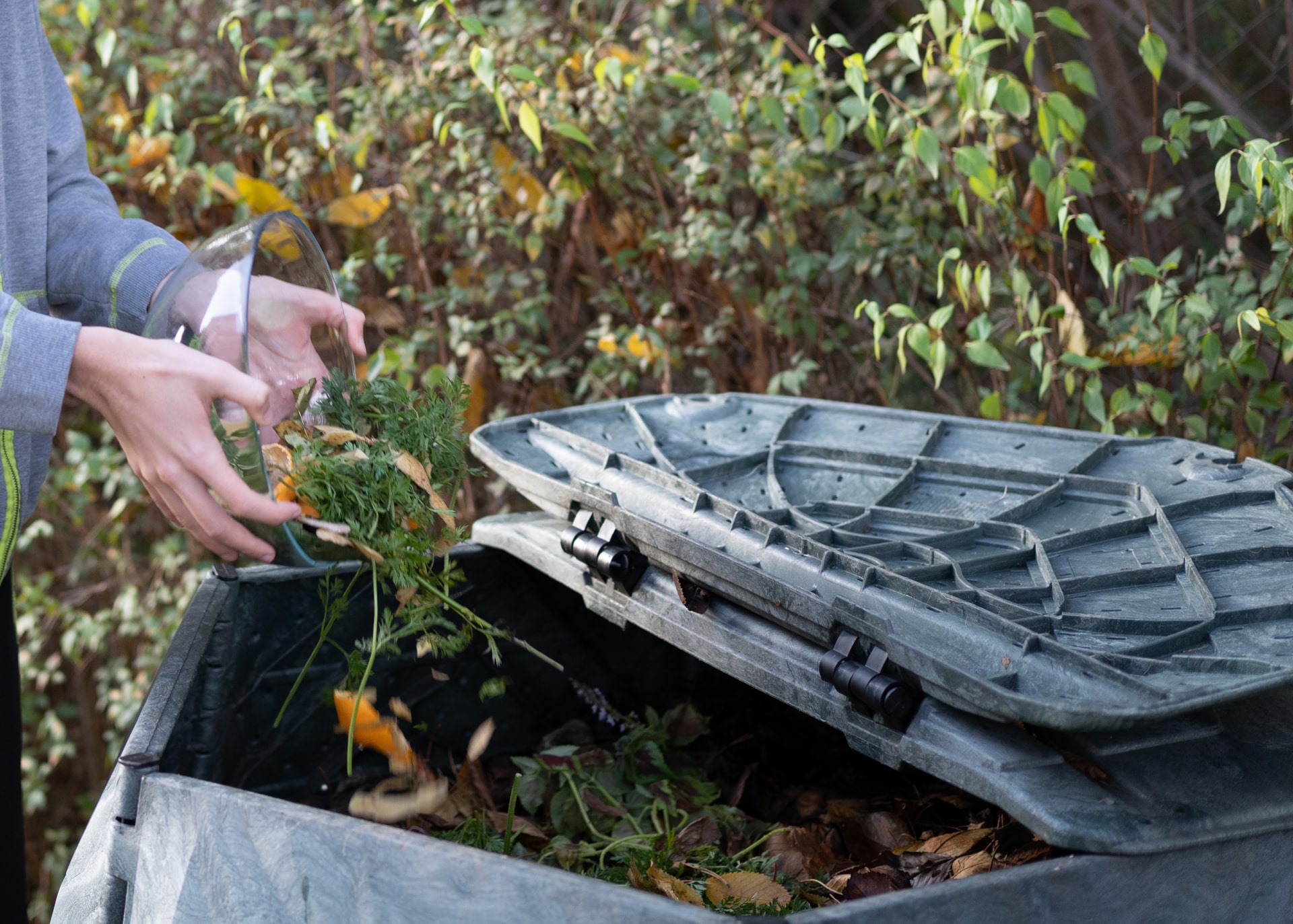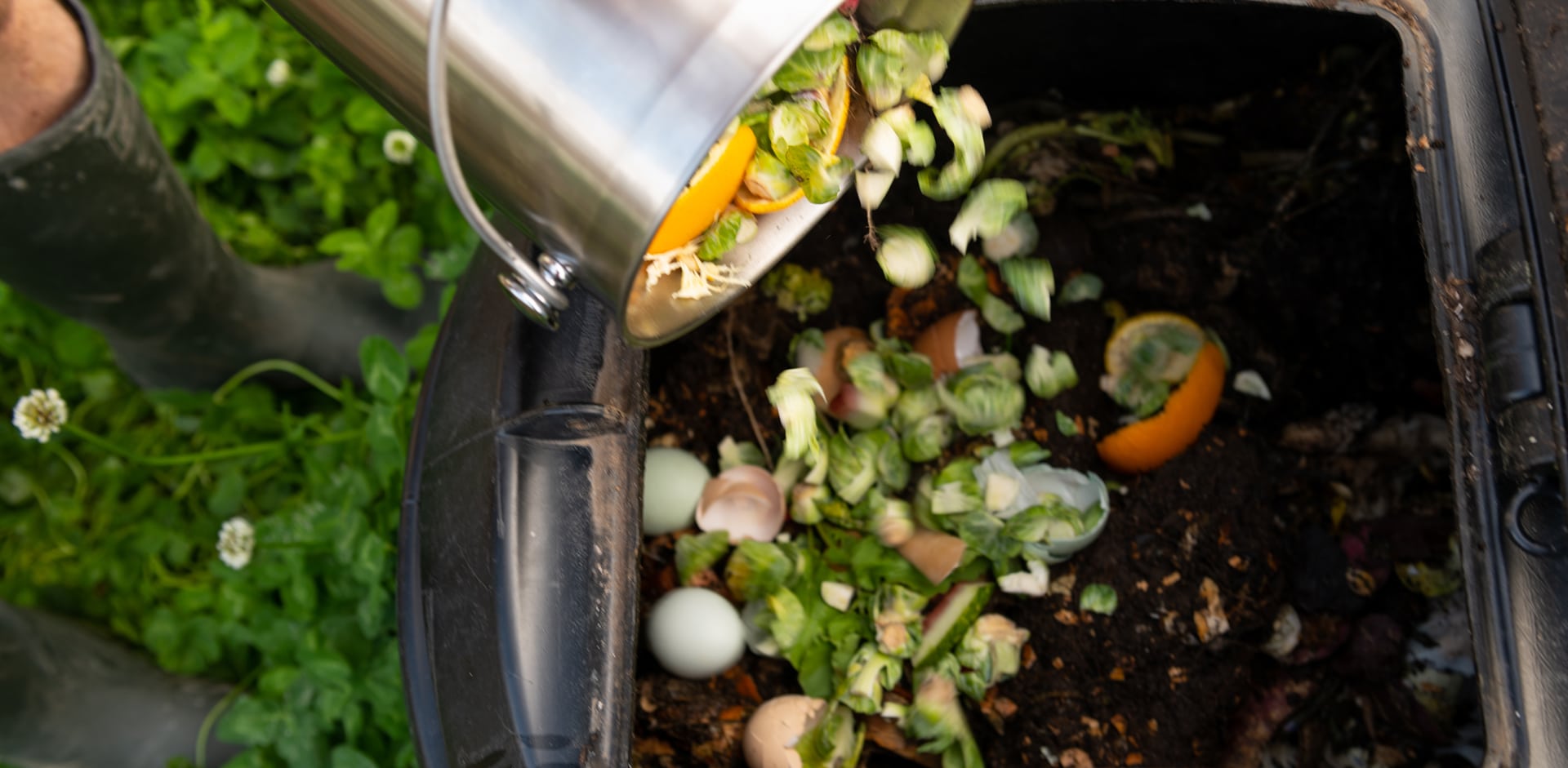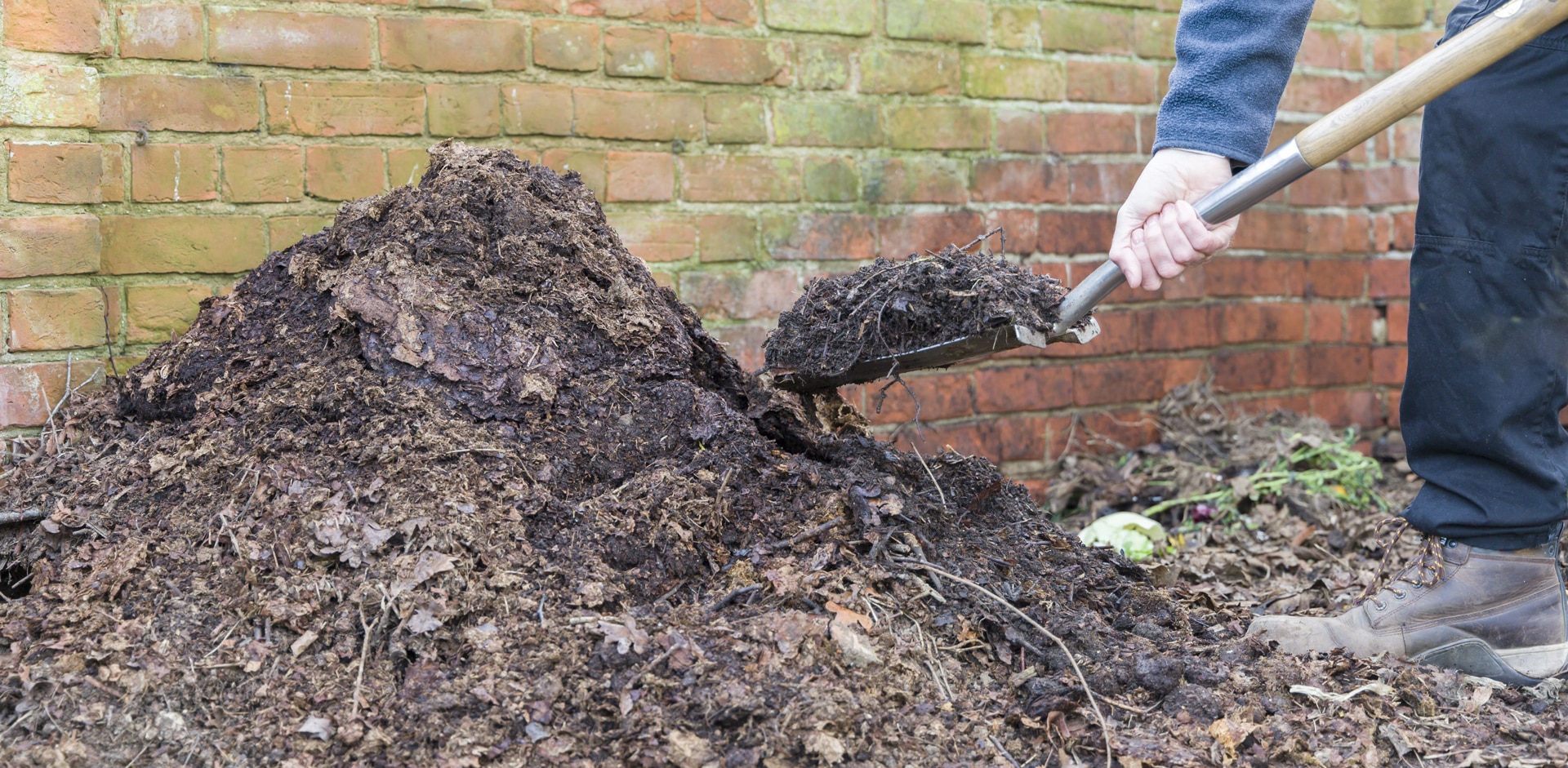
A Beginner’s Guide to Composting
After you gather all those leaves from around your yard at the end of the fall, there are a couple key uses for them. One of the most efficient – and often overlooked – options is to create a composting pile.
Composting is a relatively simple practice that involves using yard scraps and organic material to create a compound that can be used to fertilize your plants and lawn. It’s a great way to use up your extra leaves, and it is healthy and sustainable for your lawn too! Here are some composting basics from your friends at Scott’s Lawn Care.
Designate a Location
Depending on your property lines and acreage, you may want to compost in an area that won’t cause any issues with your neighbors. The corner of the lot, or near the edge of the woods, may work best. During the composting process, you will be adding various decomposing materials, so it’s wise to keep it farther away from your home.

Start with Green Material
If you have ever seen a compost bin in a cafeteria, you might remember that your food scraps end up there. To start your own composting pile, begin with items such as coffee grounds, fruit and vegetable scraps, and eggshells. However, meat and greasy items should be excluded. Other green material includes yard clippings and manure. These components will help initiate the decomposition process and provide the nitrogen necessary to create healthy compost.
Add Brown Material
Next comes the “brown” material, which is gathered from your lawn and other areas of your property. Focus on leaves, small twigs, corn stalks, sawdust, and straw. These components should be combined with the green material in a roughly even ratio, then churned and mixed together.
Add Moisture
Moisture is the key element to a thriving compost pile. Too little, and your pile will never fully decompose. Too much, and bacteria will create a slimy environment that won’t create the healthiest compost. In wetter areas, natural rainwater may supply enough moisture, but if not, a large watering can worth of water once a week should suffice.
To gauge the moisture level, check the temperature of your pile. If the center is warm or hot, you are on the right track. This means the material is decomposing properly under the right moisture conditions.

Turn the Pile
To keep all the materials decomposing harmoniously, rotate your pile once a week. This doesn’t need to be a full-scale blending, but more of a folding of the outer edges to the middle and a re-shuffling of the pile orientation.
Use the Compost!
The final step is the most fun – use your compost! Once it begins to look like natural soil, you can add your fresh compost to your plant beds to add nutrients and promote growth. Areas that experience water runoff are a great place to add compost, especially in the spring. You have successfully reduced your waste level while cost-effectively fertilizing your lawn. Nice work! Add new materials to your compost pile, then rinse and repeat.
Take Care of Your Yard with Scott’s Lawn Care
Scott’s Lawn Care is a team of professionals trained to help your yard thrive. We will work with your unique home and yard situation to ensure that your property is safe, verdant, and beautiful in every season. Make sure you’re taking the right steps to maintain the health of your lawn: contact Scott’s Lawn Care at 763-479-8155 or visit our website at scottslawncare.net.
